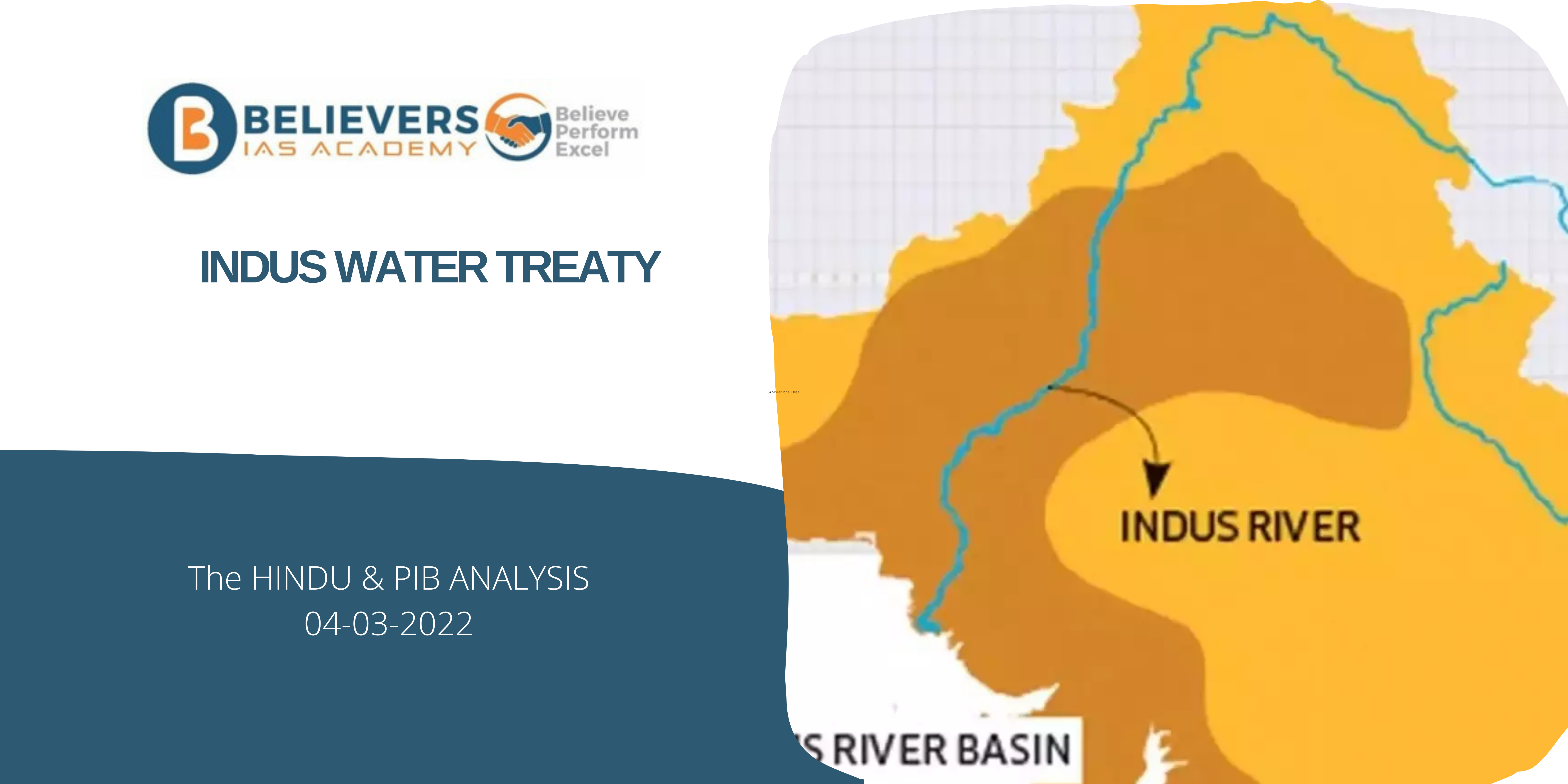Indus Water Treaty
Context:
- During the 117th meeting of the Permanent Indus Commission comprising Indus commissioners of India and Pakistan, held from March 1-3 in Islamabad, both sides discussed the issue of the Fazilka drain, and Pakistan assured that all necessary action will continue to be taken to ensure the free flow of Fazilka drain into the river Sutlej, the Ministry of External Affairs said in a statement.
About Indus Water Treaty
- After nine years of negotiations, India and Pakistan signed the IWT, with the World Bank also being a signatory.
- It was signed in Karachi on 19th September 1960 by Indian Prime Minister Jawaharlal Nehru and Pakistani President Ayub Khan.
- It gives control over the waters of the three “eastern rivers”, the Beas, Ravi and Sutlej with a mean annual flow of 33 million acre-feet (MAF), to India, while control over the waters of the three “western rivers”, the Indus, Chenab and Jhelum with a mean annual flow of 80 MAF, to Pakistan.
- India has about 20 per cent of the total water carried by the Indus system while Pakistan has 80 per cent.
- The treaty allows India to use the western river waters for limited irrigation use and unlimited non-consumptive use for such applications as power generation, navigation, floating of property, fish culture, etc.
- It lays down detailed regulations for India in building projects over the western rivers.
- The preamble of the treaty recognises the rights and obligations of each country in the optimum use of water from the Indus system in a spirit of goodwill, friendship and cooperation.
- This has not reduced the Pakistani fears that India could potentially create floods or droughts in Pakistan, especially in times of war.
- Most disagreements and disputes have been settled via legal procedures, provided for within the framework of the treaty.
Source: THE HINDU.




